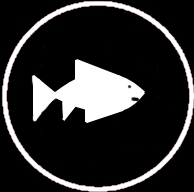South American Lungfish
Lepidosiren paradoxa
Where is it found?
Amazon river basin and lakes
Diet and foraging method
Key adaptations
South American lungfish have gills as juveniles which they use to breathe underwater, but these are greatly reduced in adulthood and they have to breathe air using their lungs. Their elongated, eel-like body shape helps them to burrow down into the mud in drought conditions. Their heavy tooth plates enable them to crush the shells of their prey.
Social organisation and mating system
N/A
Did you know that...?
Male lungfish develop gill-like structures during the breeding season, so they can release oxygen into their burrows for their offspring.
Taxonomy
Picture credits:
Maps from: http://species.mol.org/species/
"Lepidosiren paradoxa 0". Licensed under CC BY-SA 2.5 via Commons - https://commons.wikimedia.org/wiki/File:Lepidosiren_paradoxa_0.jpg#/media/File:Lepidosiren_paradoxa_0.jpg
"Lepidosiren paradoxa 0". Licensed under CC BY-SA 2.5 via Commons - https://commons.wikimedia.org/wiki/File:Lepidosiren_paradoxa_0.jpg#/media/File:Lepidosiren_paradoxa_0.jpg













